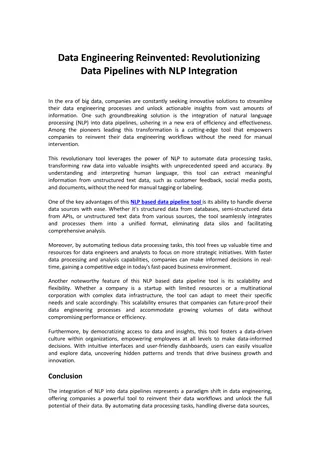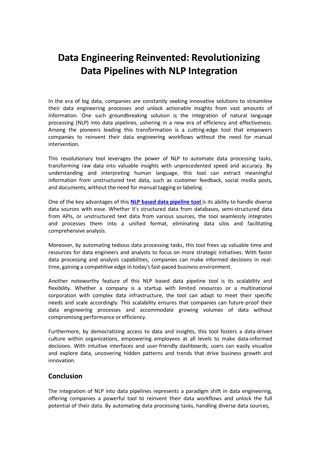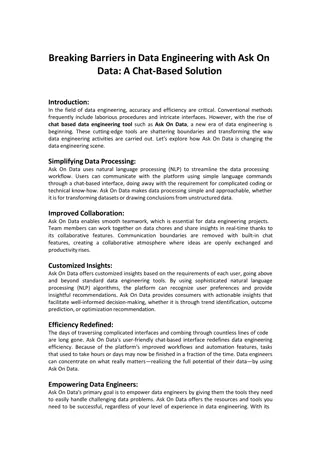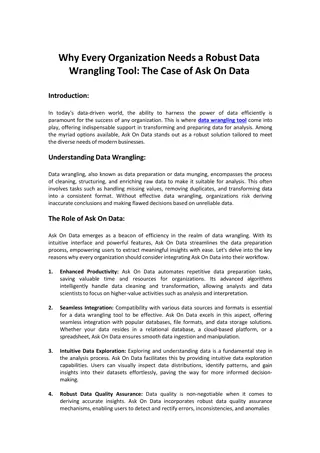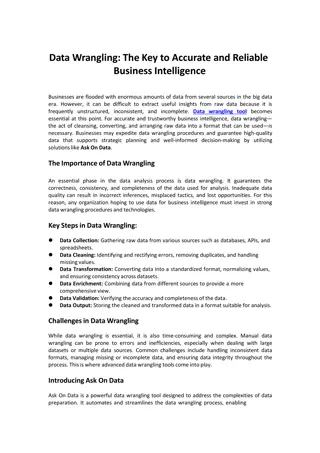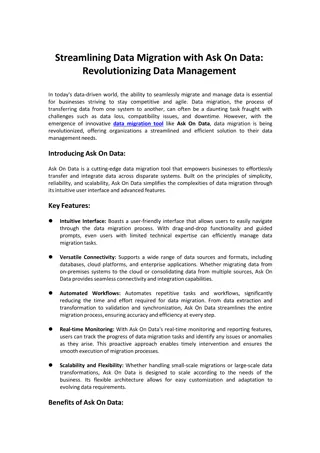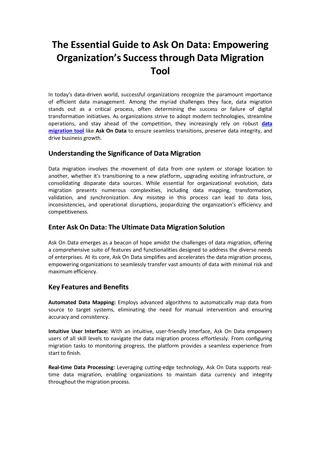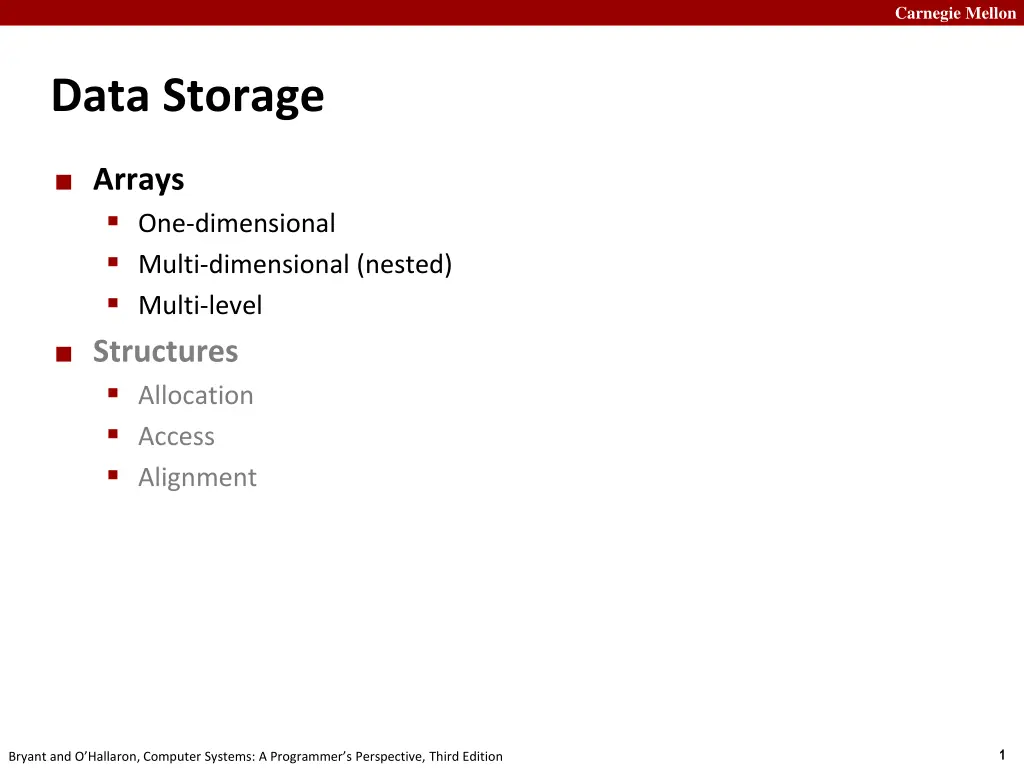
Carnegie Mellon Array Data Structures
Explore the principles of array data storage and access in the context of multi-dimensional array structures. This comprehensive guide from Carnegie Mellon covers array allocation, basic principles, and nested array declarations. Dive into the fundamentals of array manipulation and memory allocation with insights from "Computer Systems: A Programmer's Perspective" by Bryant and O'Hallaron.
Download Presentation

Please find below an Image/Link to download the presentation.
The content on the website is provided AS IS for your information and personal use only. It may not be sold, licensed, or shared on other websites without obtaining consent from the author. If you encounter any issues during the download, it is possible that the publisher has removed the file from their server.
You are allowed to download the files provided on this website for personal or commercial use, subject to the condition that they are used lawfully. All files are the property of their respective owners.
The content on the website is provided AS IS for your information and personal use only. It may not be sold, licensed, or shared on other websites without obtaining consent from the author.
E N D
Presentation Transcript
Carnegie Mellon Data Storage Arrays One-dimensional Multi-dimensional (nested) Multi-level Structures Allocation Access Alignment 1 Bryant and O Hallaron, Computer Systems: A Programmer s Perspective, Third Edition
Carnegie Mellon Array Allocation Basic Principle T A[L]; Array of data type T and length L Contiguously allocated region of L * sizeof(T) bytes in memory char string[12]; x x + 12 int val[5]; x x + 4 x + 8 x + 12 x + 16 x + 20 double a[3]; x x + 8 x + 16 x + 24 char *p[3]; x x + 8 x + 16 x + 24 2 Bryant and O Hallaron, Computer Systems: A Programmer s Perspective, Third Edition
Carnegie Mellon Array Access Basic Principle TA[L]; Array of data type T and length L Identifier A can be used as a pointer to array element 0: Type T* int val[5]; 1 5 2 1 3 x x + 4 x + 8 x + 12 x + 16 x + 20 Reference val[4] val val+1 &val[2] val[5] *(val+1) val + i Type int int * int * int * int int int * Value 3 x x+4 x+8 ?? 3 Bryant and O Hallaron, Computer Systems: A Programmer s Perspective, Third Edition
Carnegie Mellon Array Access Basic Principle TA[L]; Array of data type T and length L Identifier A can be used as a pointer to array element 0: Type T* int val[5]; 1 5 2 1 3 x x + 4 x + 8 x + 12 x + 16 x + 20 Reference val[4] val val+1 &val[2] val[5] *(val+1) val + i Type int int * int * int * int int int * Value 3 x x + 4 x + 8 ?? 5 x + 4 i 4 Bryant and O Hallaron, Computer Systems: A Programmer s Perspective, Third Edition
Carnegie Mellon Multidimensional (Nested) Arrays Declaration TA[R][C]; 2D array of data type T R rows, C columns Type T element requires K bytes A[0][0] A[0][C-1] A[R-1][0] A[R-1][C-1] Array Size R * C * K bytes Arrangement Row-Major Ordering int A[R][C]; A A A A A A [0] [0] [0] [C-1] [1] [0] [1] [C-1] [R-1] [0] [R-1] [C-1] 4*R*C Bytes 5 Bryant and O Hallaron, Computer Systems: A Programmer s Perspective, Third Edition
Carnegie Mellon Nested Array Row Access Row Vectors A[i] is array of C elements Each element of type T requires K bytes Starting address A +i * (C * K) int A[R][C] (K=4); A[0] A[i] A[R-1] A A A A A A [0] [0] [0] [C-1] [i] [0] [i] [C-1] [R-1] [0] [R-1] [C-1] A+(i*C*4) A+((R-1)*C*4) A 6 Bryant and O Hallaron, Computer Systems: A Programmer s Perspective, Third Edition
Carnegie Mellon Nested Array Element Access Array Elements A[i][j]is an element of type T, which requires K bytes Address A +i * (C * K)+ j * K = A + (i * C + j)* K int A[R][C]; A[0] A[i] A[R-1] A A A A A [0] [0] [0] [C-1] [i] [j] [R-1] [0] [R-1] [C-1] A A+(i*C*4) A+((R-1)*C*4) A+(i*C*4)+(j*4) 7 Bryant and O Hallaron, Computer Systems: A Programmer s Perspective, Third Edition
Carnegie Mellon N X N Matrix Code #define N 16 typedef int fix_matrix[N][N]; /* Get element a[i][j] */ int fix_ele(fix_matrix a, size_t i, size_t j) { return a[i][j]; } Fixed dimensions Know value of N at compile time (size_t is unsigned long) #define IDX(n, i, j) ((i)*(n)+(j)) /* Get element a[i][j] */ int vec_ele(size_t n, int *a, size_t i, size_t j) { return a[IDX(n,i,j)]; } Variable dimensions, explicit indexing Traditional way to implement dynamic arrays /* Get element a[i][j] */ int var_ele(size_t n, int a[n][n], size_t i, size_t j) { return a[i][j]; } Variable dimensions, implicit indexing Now supported by gcc 8 Bryant and O Hallaron, Computer Systems: A Programmer s Perspective, Third Edition
Carnegie Mellon 16 X 16 Matrix Access Array Elements Address A +i * (C * K)+ j * K C = 16, K = 4 /* Get element a[i][j] */ int fix_ele(fix_matrix a, size_t i, size_t j) { return a[i][j]; } # a in %rdi, i in %rsi, j in %rdx salq $6, %rsi # 64*i addq %rsi, %rdi # a + 16*(i*4) movl (%rdi,%rdx,4), %eax # M[a + 64*i + 4*j] ret 9 Bryant and O Hallaron, Computer Systems: A Programmer s Perspective, Third Edition
Carnegie Mellon n X n Matrix Access Array Elements Address A +i * (C * K)+ j * K C = n, K = 4 Must perform integer multiplication /* Get element a[i][j] */ int var_ele(size_t n, int a[n][n], size_t i, size_t j) { return a[i][j]; } # n in %rdi, a in %rsi, i in %rdx, j in %rcx imulq %rdx, %rdi # n*i leaq (%rsi,%rdi,4), %rax # a + 4*n*i movl (%rax,%rcx,4), %eax # a + 4*n*i + 4*j ret 10 Bryant and O Hallaron, Computer Systems: A Programmer s Perspective, Third Edition
Carnegie Mellon Data Storage Arrays One-dimensional Multi-dimensional (nested) Multi-level Structures Allocation Access Alignment 11 Bryant and O Hallaron, Computer Systems: A Programmer s Perspective, Third Edition
Carnegie Mellon Structure Representation r struct rec { int a[4]; size_t i; struct rec *next; }; size_t: unsigned int/long a 0 i next 24 32 16 Structure represented as block of memory Big enough to hold all of the fields Fields ordered according to declaration Even if another ordering could yield a more compact representation Compiler determines overall size + positions of fields Machine-level program has no understanding of the structures in the source code 12 Bryant and O Hallaron, Computer Systems: A Programmer s Perspective, Third Edition
Carnegie Mellon Generating Pointers to Structure Members r struct rec { int a[4]; size_t i; struct rec *next; }; r+4*idx a 0 i next 24 32 16 int *get_ap (struct rec *r, size_t idx) { return &r->a[idx]; } Generating Pointer to Array Element Offset of each structure member determined at compile time Compute as r + 4*idx # r in %rdi, idx in %rsi leaq (%rdi,%rsi,4), %rax ret 13 Bryant and O Hallaron, Computer Systems: A Programmer s Perspective, Third Edition
Carnegie Mellon struct rec { int a[4]; int i; struct rec *next; }; Following a Linked List C Code r void set_val (struct rec *r, int val) { while (r) { int i = r->i; r->a[i] = val; r = r->next; } } a i next 24 32 16 0 Element i Register %rdi %rsi Value r val .L11: # loop: movslq 16(%rdi), %rax movl %esi, (%rdi,%rax,4) # M[r+4*i] = val movq 24(%rdi), %rdi # r = M[r+24] testq %rdi, %rdi # Test r jne .L11 # if !=0 goto loop # i = M[r+16] 14 Bryant and O Hallaron, Computer Systems: A Programmer s Perspective, Third Edition
Carnegie Mellon Structures & Alignment Unaligned Data struct S1 { char c; int i[2]; double v; } *p; c i[0] i[1] v p p+1 p+5 p+9 p+17 Aligned Data Primitive data type requires K bytes Address must be multiple of K c i[0] i[1] v 3 bytes 3 bytes 4 bytes 4 bytes p+0 p+4 p+8 p+16 p+24 Multiple of 4 Multiple of 8 Multiple of 8 Multiple of 8 15 Bryant and O Hallaron, Computer Systems: A Programmer s Perspective, Third Edition
Carnegie Mellon Alignment Principles Aligned Data Primitive data type requires K bytes Address must be multiple of K Required on some machines; advised on x86-64 Motivation for Aligning Data Memory accessed by (aligned) chunks of 4 or 8 bytes (system dependent) Inefficient to load or store datum that spans quad word boundaries Virtual memory trickier when datum spans 2 pages Compiler Inserts gaps in structure to ensure correct alignment of fields 16 Bryant and O Hallaron, Computer Systems: A Programmer s Perspective, Third Edition
Carnegie Mellon Specific Cases of Alignment (x86-64) 1 byte: char, no restrictions on address 2 bytes: short, lowest 1 bit of address must be 02 4 bytes: int, float, lowest 2 bits of address must be 002 8 bytes: double, long,char *, lowest 3 bits of address must be 0002 16 bytes: long double (GCC on Linux) lowest 4 bits of address must be 00002 17 Bryant and O Hallaron, Computer Systems: A Programmer s Perspective, Third Edition
Carnegie Mellon Satisfying Alignment with Structures Within structure: Must satisfy each element s alignment requirement struct S1 { char c; int i[2]; double v; } *p; Overall structure placement Each structure has alignment requirement K K = Largest alignment of any element Initial address & structure length must be multiples of K Example: K = 8, due to double element c i[0] i[1] v 3 bytes 3 bytes 4 bytes 4 bytes p+0 p+4 p+8 p+16 p+24 Multiple of 4 Multiple of 8 Multiple of 8 Multiple of 8 18 Bryant and O Hallaron, Computer Systems: A Programmer s Perspective, Third Edition
Carnegie Mellon Satisfying Alignment with Structures Within structure: Must satisfy each element s alignment requirement struct S1 { char c; int i[2]; double v; int x; } *p; Overall structure placement Each structure has alignment requirement K K = Largest alignment of any element Initial address & structure length must be multiples of K Example: K = 8, due to double element c i[0] i[1] v x 3 bytes 3 bytes 4 bytes 4 bytes 4 bytes p+32 p+0 p+4 p+8 p+16 p+24 Multiple of 4 Multiple of 8 Multiple of 8 Multiple of 8 Multiple of 8 19 Bryant and O Hallaron, Computer Systems: A Programmer s Perspective, Third Edition
Carnegie Mellon Meeting Overall Alignment Requirement For largest alignment requirement K struct S2 { double v; int i[2]; char c; } *p; Overall structure must be multiple of K v i[0] i[1] c 7 bytes p+0 p+8 p+16 p+24 Multiple of K=8 20 Bryant and O Hallaron, Computer Systems: A Programmer s Perspective, Third Edition
Carnegie Mellon Arrays of Structures struct S2 { double v; int i[2]; char c; } a[10]; Overall structure length multiple of K Satisfy alignment requirement for every element a[0] a[1] a[2] a+0 a+24 a+48 a+72 v i[0] i[1] c 7 bytes a+24 a+32 a+40 a+48 21 Bryant and O Hallaron, Computer Systems: A Programmer s Perspective, Third Edition
Carnegie Mellon Accessing Array Elements struct S3 { short i; float v; short j; } a[10]; Compute array offset 12*idx sizeof(S3), including alignment spacers Element j is at offset 8 within structure Assembler gives offset a+8 Resolved during linking a[0] a[idx] a+0 a+12 a+12*idx i v j 2 bytes 2 bytes a+12*idx a+12*idx+8 short get_j(int idx) { return a[idx].j; } # %rdi = idx leaq (%rdi,%rdi,2),%rax # 3*idx movzwl a+8(,%rax,4),%eax 22 Bryant and O Hallaron, Computer Systems: A Programmer s Perspective, Third Edition
Carnegie Mellon Saving Space Put large data types first struct S5 { int i; char c; char d; } *p; struct S4 { char c; int i; char d; } *p; Effect (K=4) c i d 3 bytes 3 bytes 3 bytes 3 bytes i c d 2 bytes 2 bytes 23 Bryant and O Hallaron, Computer Systems: A Programmer s Perspective, Third Edition
Carnegie Mellon Union Allocation Principles Overlay union elements Allocate according to largest element Can only use one field at a time union U1 { char c; int i[2]; double v; } *up; c i[0] v i[1] up+0 up+4 up+8 struct S1 { char c; int i[2]; double v; } *sp; c i[0] i[1] v sp+0 sp+4 sp+8 sp+16 sp+24 24 Bryant and O Hallaron, Computer Systems: A Programmer s Perspective, Third Edition
Carnegie Mellon Union to Access Bit Patterns typedef union { float f; unsigned u; } bit_float_t; float bit2float(unsigned u) { bit_float_t arg; arg.u = u; return arg.f; } u f 0 4 Get direct access to bit representation of float bit2float generates float with given bit pattern NOT the same as (float) u float2bit generates bit pattern from float NOT the same as (unsigned) f unsigned float2bit(float f) { bit_float_t arg; arg.f = f; return arg.u; } 25 Bryant and O Hallaron, Computer Systems: A Programmer s Perspective, Third Edition





